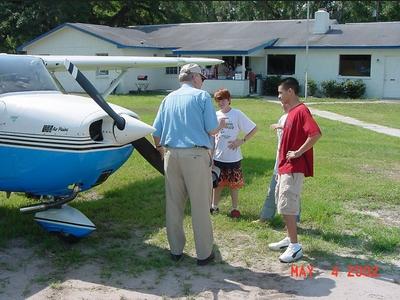Tue, Aug 23, 2016
Recent Experience May Also Determine If You Are Legal To Fly Or Carry Passengers
Airline and military pilots have a built-in system that keeps them current. By current we mean they meet certain flying requirements to be legal to act in their pilot-in-command (PIC) capacity and be able to carry passengers. With the general aviation pilots, it’s up to the individual pilot to maintain the requirements for recent experience.

The first one that usually comes to mind is the flight review. To act as PIC, the pilot must have received a flight review, or its approved equivalent, within the previous 24 calendar months. A flight review is just what the name implies; it’s a review. FAR 61.56 requires a minimum of one hour of ground training and one hour of flight training. Remember, if a pilot is not up-to-date with a flight review, that pilot is not allowed to fly as PIC with or without passengers, and is also not legal to be PIC flying to an airport to receive the flight review.
Okay, you have your pilot certificate and meet the medical requirements, and your flight review is current. This means you can just load your passenger and go, right? Not exactly; you must also have made 3 takeoffs and landings within the preceding 90 days to be legal to carry a passenger (this is 90 days, not 3 calendar months). In a nose-wheel equipped plane, these takeoffs and landings may be touch-and-goes, but in a tail-wheel plane, they must be to a full stop. If you are planning a night flight, you also have to meet the “3-in-90” rule for nighttime flying and these landings must also be to a full stop.
Remember, if you are out of date for a flight review, you may not pilot any aircraft as PIC, but if it’s only the “3-in-90” takeoffs and landings that needs updating, you can meet the requirement in solo flight and then load your passenger (if they are willing!). There is no regulation requiring the logging of all flight time, but be sure to log enough takeoffs and landings to be able to prove you are current for passenger carrying.
This is just a quick overview that applies to recreational airplane pilots. FAR 61 gets into more details about category/class and type-rated recent experience requirements.
(Image from file)
More News
Also: B-29 Superfortress Reunion, FAA Wants Controllers, Spirit Airlines Pulls Back, Gogo Galileo Van's Aircraft posted a short video recapping the goings-on around their reorganiz>[...]
Light Gun A handheld directional light signaling device which emits a brilliant narrow beam of white, green, or red light as selected by the tower controller. The color and type of>[...]
"The journey to this achievement started nearly a decade ago when a freshly commissioned Gentry, driven by a fascination with new technologies and a desire to contribute significan>[...]
"Our driven and innovative team of military and civilian Airmen delivers combat power daily, ensuring our nation is ready today and tomorrow." Source: General Duke Richardson, AFMC>[...]
Aircraft Conflict Predicted conflict, within EDST of two aircraft, or between aircraft and airspace. A Red alert is used for conflicts when the predicted minimum separation is 5 na>[...]
 Airborne 04.16.24: RV Update, Affordable Flying Expo, Diamond Lil
Airborne 04.16.24: RV Update, Affordable Flying Expo, Diamond Lil ANN's Daily Aero-Term (04.20.24): Light Gun
ANN's Daily Aero-Term (04.20.24): Light Gun Aero-News: Quote of the Day (04.20.24)
Aero-News: Quote of the Day (04.20.24) Aero-News: Quote of the Day (04.21.24)
Aero-News: Quote of the Day (04.21.24) ANN's Daily Aero-Term (04.21.24): Aircraft Conflict
ANN's Daily Aero-Term (04.21.24): Aircraft Conflict



